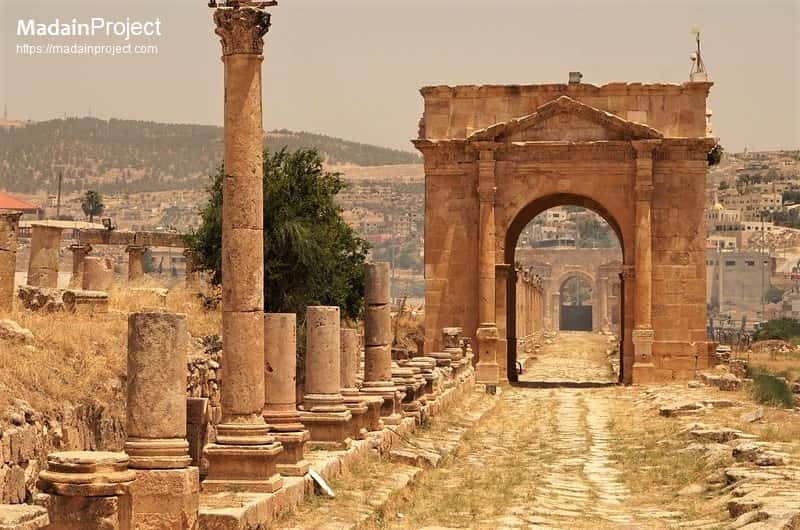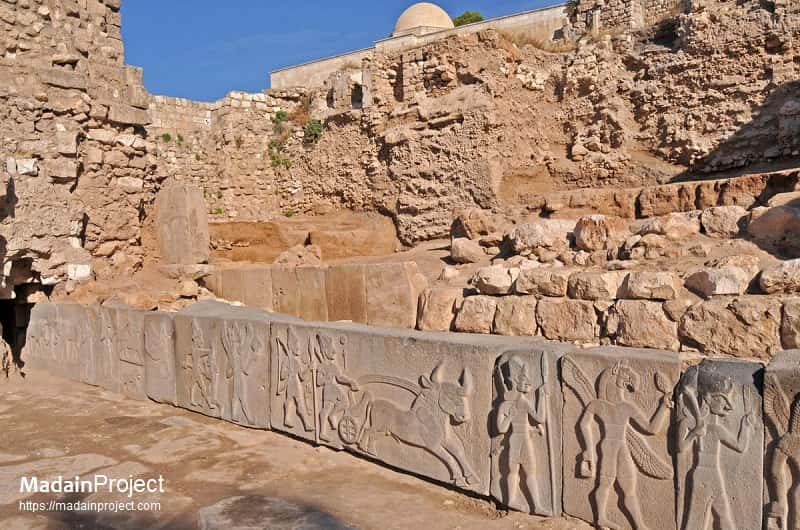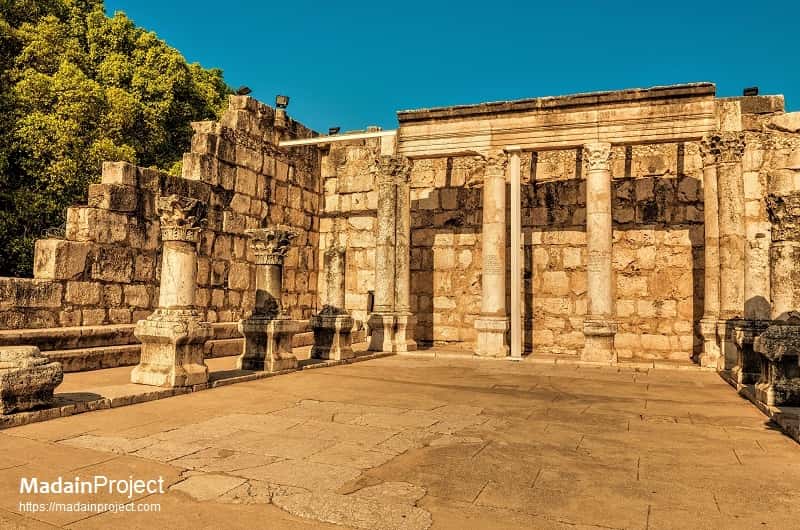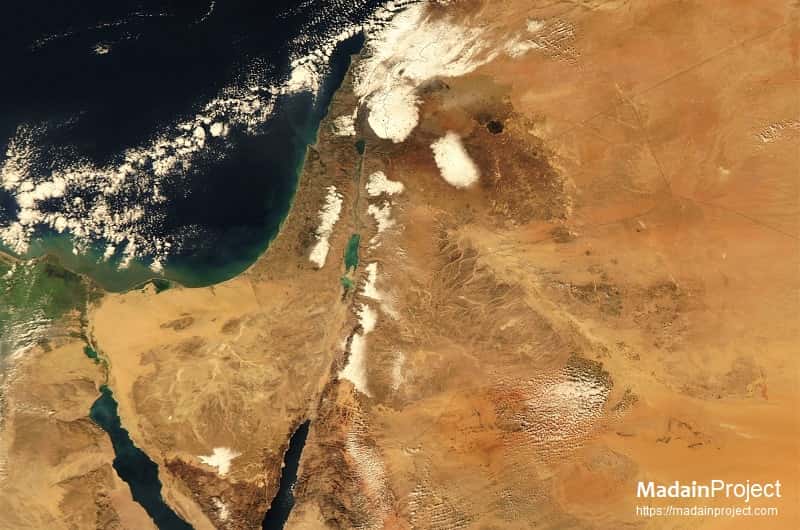Biblical archaeology involves the recovery and scientific investigation of the material remains of past cultures that can illuminate the periods and descriptions in the Bible, be they from the Old Testament (Hebrew Bible) or from the New Testament, as well as the history and cosmogony of Judaism and Christianity.
Biblical archaeology encompasses archaeological investigations of cultures and peoples described in Jewish and Christian religious texts (including the Old Testament, Apocrypha, and New Testaments) from roughly 3200 BCE. It combines archaeological investigations with textual analysis to aid in understanding everyday life and events from the time.
A famous example of historical analysis combining biblical texts with archaeology is the inclusion of domestic camels in the biblical depictions of Abraham. Discrepancies between the date when camels first appear at archaeological sites and the supposed dates of Abraham's life have led to debates about when the stories were first recorded and the degree of later editing that may have occurred since they were originally composed, either in written or oral form.
The principal location of interest is what is known in the relevant religions as the Holy Land, which from a Western perspective is also called the Middle East. In contrast, Near Eastern archaeology deals with the Ancient Near East, or Middle East, without giving any special consideration to whether its discoveries have any relationship with the Bible.

circa 1800 CE-
Biblical archaeology emerged in the early 19th century, initially driven by religious and nationalist motives rather than scientific methods. Early explorers like William F. Lynch and Edward Robinson began mapping biblical sites, with discoveries such as the Moabite Stone supporting biblical narratives, though skeptics remained. In the early 20th century, W.F. Albright and others applied more scientific excavation methods, validating aspects of the Bible’s history, including the Dead Sea Scrolls. By the mid-20th century, scholars integrated modern archaeological techniques, though contradictions between biblical chronology and material evidence led to increasing skepticism. The post-1980s shift focused on social contexts, with scholars like Finkelstein and Silberman arguing that the Bible was shaped by later ideologies. The 21st century saw new technologies and methods applied to biblical sites, but debates continue over the accuracy of biblical texts and their alignment with archaeological findings, especially as political tensions complicate the field.
circa 1800 CE-
Definition
There's no universal definition of the term, although, in its modern iteration the term Biblical Archaeology is defined as the study of material record of cultures, places, people and events in the context of archaeology that contributed in the formation of Biblical texts.
Concept
The modern concept of biblical archaeology stems from the belief that archaeological discoveries can provide valuable insights into the world of the Bible, confirming, clarifying, or challenging biblical narratives. Scholars in this field utilize various archaeological methods, including excavation, survey, and analysis of artifacts, to explore sites mentioned in the Bible or relevant to biblical history.
Approches
Historically, there have been two approaches or vantage points to the field of Biblical Archaeology.
First, in the early to mid-19th century CE when the field was still in its infancy, the main focus of the expeditions was to confirm the history and historicity of the Bible. This meant (generally not always) to read something in the Bible and try to find something that resembles the texts. During this period the expeditions were usually funded by religious institutions.
Second, in the mid twentieth century CE, a new methodology developed that looked at the archaeological and historical record and studied its relation to the Bible and Biblical texts. During this period, a more systematic approach was refined and the financing of the activities moved from religious institutions to the educational institutions (universities and colleges etc). More and more scholars are adopting this style of study.
Relation to Other Fields of Study
Biblical archaeology often intersects with other disciplines, such as anthropology, history, and linguistics, to interpret archaeological findings within their cultural, social, and religious contexts. While biblical archaeology aims to illuminate the past, it also prompts discussions and debates about the interpretation of evidence and its implications for understanding ancient civilizations and the development of religious traditions and the relation among them.
William F. Albright
Renowned as the "father of biblical archaeology," Albright's work laid the foundation for modern biblical archaeology. His excavations in the Levant provided significant insights into the historical context of the Bible's narratives.
Kathleen Kenyon
A pioneering archaeologist, Kenyon's excavations at Jericho and Jerusalem set new standards for archaeological methodology and contributed substantially to understanding biblical history. Her excavation at Jericho challenged traditional views and methods in archaeology, and her meticulous work contributed greatly to understanding the history of ancient Israel and the biblical narratives associated with it.<
Yigael Yadin
Known for his discoveries at Masada and other sites in Israel, Yadin's work illuminated aspects of Jewish history and the events described in the Hebrew Bible.
William G. Dever
A prominent figure in biblical archaeology, Dever's excavations and publications have advanced the understanding of ancient Israelite history and culture. His work has focused on debunking myths and misconceptions while emphasizing the importance of archaeological evidence.
Amihai Mazar
Known for his excavations at Tel Rehov and other sites, Mazar's research has contributed significantly to understanding the Iron Age history of Israel and its connections to biblical narratives.


In the context of Biblical Archaeology, the ancient land of Egypt serves as a pivotal backdrop in the biblical narrative. Its influence on the biblical accounts, from the time of patriarchs to the exodus, captivates the archaeological imagination. Exploring the artifacts, inscriptions, and architectural wonders unearthed from the sands of time, scholars delve into the intersections of biblical narratives with the enigmatic world of the Nile Delta. The quest for understanding the intertwining threads of biblical and Egyptian history unveils not only the archaeological treasures of an ancient civilization but also sheds light on the cultural crossroads where sacred scriptures and earthly realms converge. Explore Anceint Egypt

In the cradle of civilization, where the Tigris and Euphrates rivers converge, lies the ancient land of Iraq, a region steeped in the sands of time and resonating with echoes of a biblical past. As a crucible of human history, this mesopotamian expanse serves as a paramount stage for biblical archaeology, where archaeologists, historians, and scholars diligently unearth and decode the remnants of ancient civilizations. Amidst the sunbaked ruins and labyrinthine ziggurats, Iraq unfolds as a living chronicle of the Old Testament, revealing glimpses of mighty empires, prophetic figures, and ancient cultures that intertwine seamlessly with the narratives found in the sacred texts. Explore Anceint Iraq

Nestled between the towering peaks of Mount Nebo and the fertile plains of the Jordan Valley, this ancient land echoes with the footprints of biblical figures and the resonance of sacred events. The archaeological endeavors in Jordan bring to light the remnants of cities, fortifications, and religious sites that resonate with the biblical stories of prophets, kings, and the chosen people. As scholars unearth artifacts and inscriptions from the layers of history, the ancient landscapes of Jordan provide a nuanced perspective on the biblical accounts, offering a tangible connection to the narratives that have shaped the religious and cultural heritage of the region. Explore Anceint Jordan

The ancient landscapes of Syria unfold as a cradle of civilizations, bearing witness to the interwoven tales of biblical events and historical epochs. Nestled within the Fertile Crescent, this ancient land, rich with its diverse topography and cultural heritage, serves as a profound backdrop to the biblical narrative. As archaeologists meticulously unearth the remnants of ancient cities, temples, and artifacts, Syria emerges as a crucible where the sacred and the earthly converge. From the storied city of Damascus to the archaeological treasures of Ebla, the excavation sites in Syria become portals to understanding the cultural context in which biblical figures walked and prophetic voices resonated. Explore Anceint Syria

This hallowed terrain, where ancient prophets spoke and where the events of the Old and New Testaments unfolded, captivates the imagination of scholars and explorers alike. From the iconic city of Jerusalem to the ruins of Jericho, archaeological excavations in Israel and Palestine unveil layers of history that resonate with the sacred stories documented in the Bible. The search for artifacts, inscriptions, and architectural remnants transcends the boundaries of time, offering a tangible connection to the foundational narratives of Judaism and Christianity. As spades dig into the earth, the ancient landscapes come alive with the echoes of patriarchs, kings, and the enduring legacy of a people chosen to play a pivotal role in the biblical saga. Explore Ancient Israel/Palestine

he region known as the Levant, encompassing the ancient land of Canaan, emerges as a crucible of biblical narratives and archaeological wonders. This geographical crossroads, bordered by the Mediterranean Sea to the west, the Jordan River to the east, and flanked by the Arabian Desert and the Taurus Mountains, holds a profound significance in the biblical accounts. From the momentous stories of the patriarchs to the Israelite conquest, the Levant serves as a foundational backdrop to the sacred texts. Explore Levant / Canaan
This seal impression, called a bulla, was found (2015 CE) in a cache together with 33 other seals, figurines and ceramics, inside a collapsed building adjacent to Temple Mount that Jerusalemite archaeologist Eilat Mazar had already deemed to have had an administrative function. The oval impression on the clay seal, which was most likely set in a ring, states in ancient Hebrew script: "Belonging to Hezekiah [son of] Ahaz king of Judah." It also shows a two-winged sun, with wings turned downward, flanked by two ankh symbols symbolizing life.
Biblical Archaeology Society
The Biblical Archaeology Society (BAS), established in 1974 CE by American lawyer Hershel Shanks, is a nonprofit organization dedicated to information about archaeology in the Bible lands. Its current publications include the Biblical Archaeology Review, whilst previously circulating the Bible Review and Archaeology Odyssey. The Biblical Archaeology Society has gained global traction, not only through its popular publication The Biblical Archaeology Review, yet through its involvement in multiple authenticity scandals.
Armstrong Institute of Biblical Archaeology
The Armstrong Institute of Biblical Archaeology is a renowned institution dedicated to the study and exploration in the field of biblical archaeology, located in Jerusalem. Founded with the vision of advancing research and understanding of biblical history and archaeology, the institute plays a vital role in uncovering evidence that sheds light on the narratives and characters depicted in the Bible. Led by esteemed biblical archaeologist Dr. Mazar, the institute conducts excavations, research projects, and educational programs aimed at illuminating the ancient world as it relates to biblical texts. Through its initiatives, the Armstrong Institute seeks to bridge the gap between archaeology and biblical scholarship, providing valuable insights into the historical contexts of biblical events and civilizations. With its commitment to rigorous academic inquiry and dissemination of knowledge, the institute stands at the forefront of biblical archaeology, contributing significantly to our understanding of the ancient Near East and its relevance to biblical narratives.
From the earliest tablets of creation to artifacts connected with the life and resurrection of Jesus, Unearthing the Bible shows you can be confident there is an abundance of archaeological support for the history told in the Scriptures. Using this visual guide, you can find context for your faith as you make your way through the Bible.
See on Amazon
Excavating the Evidence for Jesus progresses chronologically through the Gospels, noting the many relevant archaeological, historical, geographic, and literary findings. As you read, you’ll be able to decide for yourself whether the evidence confirms the existence and story of Jesus, and determine whether the Gospels are worthy...
See on Amazon
Signup for our monthly newsletter / online magazine.
No spam, we promise.